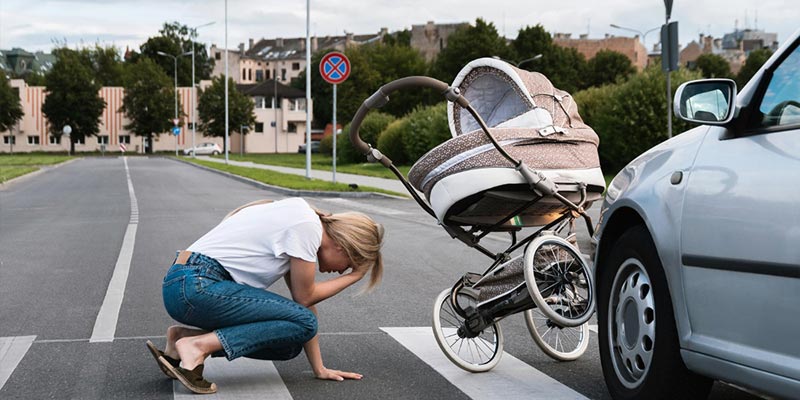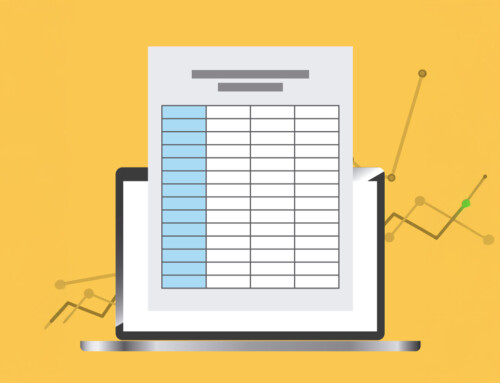Contents
Why Hiring a Personal Injury Lawyer is Essential After a Pedestrian Accident
Pedestrian accident cases represent a significant and complex area of personal injury law, often involving severe injuries or fatalities due to the vulnerability of individuals on foot when struck by vehicles or other moving objects. These cases highlight the critical need for legal intervention, as they frequently arise from driver negligence, pedestrian mistakes, or hazardous environmental conditions such as poor lighting or unsafe crosswalks. Understanding the intricacies of pedestrian accident cases is essential for both legal practitioners and the victim’s seeking justice and compensation, as these incidents can result in life-altering consequences that extend far beyond the immediate physical injuries.
Overview of Pedestrian Accident Cases
A pedestrian accident occurs when a person on foot is struck by a vehicle, bicycle, or other moving objects. These cases often involve severe injuries or fatalities, making them a critical area where personal injury law plays a crucial role. Pedestrian accidents typically happen due to drivers’ negligence, pedestrian negligence, environmental factors such as poor lighting, unsafe crosswalks, inclement weather conditions, and vehicle defects.
Common types of injuries in pedestrian accidents include:
- Head Injuries: Concussions, traumatic brain injuries.
- Spinal Cord Injuries: Paralysis or severe mobility issues.
- Fractures and Broken Bones: Legs, arms, ribs.
- Internal Injuries: Damage to organs, internal bleeding.
- Psychological Trauma: PTSD, anxiety, depression.
Steps to Take After a Pedestrian Accident
After a pedestrian accident, it is crucial to prioritize your safety and take steps to protect your legal rights. Begin by assessing your condition and moving to a safe location if possible. It is required to call emergency services immediately, both for medical assistance and to report the accident. Even if your injuries seem minor, a medical professional should evaluate it. Contact the police to file an official report, providing a clear and accurate account of the incident without speculating or admitting fault.
Gathering evidence at the scene is essential. Take photographs of the accident scene, your injuries, the vehicle involved, and any relevant road conditions or traffic signs. Collect the driver’s contact information, insurance details, vehicle registration number, and contact information from any witnesses. Preserving physical evidence, such as damaged clothing, can also be important later.
Seeking prompt medical treatment is critical, even if you initially feel fine, as some injuries might not be immediately apparent. Keep detailed records of your medical treatment, including all doctor’s visits, medications, and any rehabilitation required. You should also notify your insurance company about the accident immediately. However, avoid making detailed statements or accepting a settlement before consulting a personal injury lawyer.
Consulting with an experienced personal injury attorney is crucial in protecting your rights and navigating the legal process. Your lawyer can help you understand your rights, communicate with insurance companies, and pursue compensation for your injuries. It is important not to speak to the other party’s insurance company or sign any documents without consulting your lawyer.
Keeping detailed records of everything related to the accident is also essential. This includes all communications, medical records, and any expenses incurred from the accident, such as medical bills, transportation to appointments, and lost wages. Monitor your health closely for delayed symptoms and follow all medical advice to ensure your injuries do not worsen.
Finally, consider the potential long-term effects of your injuries. If your injuries may result in long-term disability or require ongoing care, discuss these possibilities with your lawyer to pursue compensation that covers your future needs. These steps can help ensure your well-being and protect your legal rights after a pedestrian accident.

Proving Negligence in Pedestrian Accident Cases
Proving negligence in pedestrian accident cases is essential for securing compensation for the injured party. To establish negligence, the following key elements must be demonstrated:
1. Duty of Care
The first step in proving negligence is establishing that the driver owed a duty of care to the pedestrian. All drivers are legally obligated to operate their vehicles safely and follow traffic laws, which includes exercising caution around pedestrians. This duty of care is a fundamental aspect of road safety and applies universally to all drivers.
2. Breach of Duty
Once the duty of care is established, the next step is to show that the driver breached this duty. A breach occurs when the driver fails to act as a reasonably prudent person would under similar circumstances. Examples of a breach might include speeding, running a red light, texting while driving, or failing to yield to a pedestrian in a crosswalk. This breach of duty is the core of a negligence claim.
3. Causation
After demonstrating that the driver breached their duty of care, it must be proven that this breach directly caused the pedestrian’s injuries. This is known as causation. The injured party must show that the accident would not have occurred if not for the driver’s actions or inactions. Establishing a clear link between the breach of duty and the injuries sustained is required.
4. Damages
Finally, the injured pedestrian must prove that they suffered actual damages as a result of the accident. Damages can include medical expenses, lost wages, pain and suffering, emotional distress, and any other financial or non-financial losses resulting from the accident. Providing evidence of these damages is crucial for the success of the negligence claim.
Supporting Evidence
To effectively prove negligence, gathering and presenting supporting evidence is critical. This evidence may include:
- Witness Testimonies: Statements from people who saw the accident can provide valuable insights into how the accident occurred.
- Police Reports: Official reports can document the circumstances of the accident and may include the officer’s observations or citations issued to the driver.
- Traffic Camera Footage: If available, video evidence can be a powerful tool in proving the driver’s breach of duty.
- Medical Records: Documentation of injuries and treatment helps establish the extent of damages and the connection between the accident and the injuries.
- Accident Reconstruction Experts: In complex cases, experts may be used to reconstruct the accident and determine how the driver’s actions led to the pedestrian’s injuries.
Successfully proving negligence in a pedestrian accident case requires a thorough understanding of the legal elements and a strategic approach to gathering and presenting evidence. By establishing the duty of care, breach of duty, causation, and damages, the injured party can build a compelling case for compensation.
Compensation in Pedestrian Accident Cases
Compensation in pedestrian accident cases is intended to cover the losses and hardships experienced by the injured party due to the accident. The amount and type of compensation awarded can vary depending on the injuries’ severity, the accident’s circumstances, and most importantly, the profound impact on the victim’s life. Here are the main types of compensation that may be available in pedestrian accident cases:
Medical Expenses
Compensation serves as a safety net, covering the cost of emergency medical treatment, hospital stays, surgeries, and any other immediate care required after the accident. For serious injuries, it may also include the costs of ongoing medical care, such as physical therapy, rehabilitation, medication, and any necessary medical devices (e.g., crutches, wheelchairs). In cases where long-term or permanent care is required, compensation may account for future medical expenses related to the injury, providing a sense of security.
Lost Wages
If the pedestrian is unable to work due to their injuries, they may be entitled to compensation for lost wages during the recovery period. In cases where the injury results in a long-term or permanent disability that affects the victim’s ability to earn income at the same level as before the accident, compensation may be awarded for the loss of earning capacity, ensuring a fair resolution.
Pain and Suffering
Compensation is not just about physical injuries. It also acknowledges the emotional and psychological trauma that can result from pedestrian accidents. Compensation may be awarded for the physical pain and discomfort endured by the pedestrian, as well as the significant emotional and psychological trauma, such as anxiety, depression, or PTSD. This recognition can provide a sense of validation to the victim.
Loss of Enjoyment of Life
Suppose the injuries have reduced quality of life, such as the inability to participate in activities or hobbies the victim previously enjoyed. In that case, compensation may be awarded for this loss, which is known as the loss of enjoyment of life. This is distinct from compensation for the physical pain and discomfort endured by the pedestrian, which is covered under the category of pain and suffering.
Permanent Disability or Disfigurement
In cases where the accident results in permanent disability or disfigurement, compensation may be provided to cover the long-term impact on the victim’s life, including the need for adaptive devices or home modifications.
Property Damage
If any personal property, such as clothing, a mobile phone, or other items, was damaged in the accident, the victim may be compensated for the cost of repairing or replacing these items.
Wrongful Death
If the pedestrian accident results in a fatality, the family members of the deceased may be entitled to compensation through a wrongful death claim. This can include compensation for funeral and burial expenses, loss of companionship, and loss of financial support.
Punitive Damages
In cases where the driver’s actions were particularly reckless or egregious, punitive damages may be awarded. These are intended to punish the wrongdoer and deter similar conduct in the future, rather than to compensate the victim directly.
Legal Fees
In some cases, the compensation awarded may include the costs of legal representation, ensuring that the victim does not bear the financial burden of seeking justice.
The goal of compensation in pedestrian accident cases is to make the injured party as whole as possible, addressing both the financial and non-financial impacts of the accident. The specific compensation available will depend on the details of the case and the applicable laws in the jurisdiction where the accident occurred.
Challenges in Pedestrian Accident Cases
Pedestrian accident cases often present unique challenges that can complicate seeking compensation and justice. Understanding these challenges is crucial for navigating the legal process effectively. Here are some of the primary challenges faced in pedestrian accident cases:
Determining Liability: One of the most significant challenges is determining who is at fault. In some cases, both the driver and the pedestrian may share responsibility for the accident. For example, if the pedestrian was jaywalking or crossing outside of a designated crosswalk, it could complicate the determination of liability. If multiple vehicles or parties were involved in the accident, pinpointing the responsible party or parties can be complex, requiring thorough investigation and legal analysis.
Insufficient Evidence: Pedestrian accidents may occur in areas where there are few or no witnesses, making it difficult to establish what happened. This lack of testimony can hinder the ability to prove negligence. The available evidence, such as surveillance footage or accident scene photos, may be inconclusive or unclear, making it challenging to build a strong case.
Comparative Negligence: In jurisdictions that follow comparative negligence laws, the pedestrian’s compensation may be reduced based on their percentage of fault. For instance, if the pedestrian is found to be 20% at fault for the accident, their compensation may be reduced by that percentage. This can significantly impact the amount of compensation the victim receives.
Insurance companies and defense attorneys may aggressively argue that the pedestrian shares a significant portion of the blame, even in cases where the driver’s negligence is clear.
Severe Injuries with Long-term Impact: Pedestrian accidents often result in severe injuries, which can lead to complex medical cases. Proving the extent of injuries and the need for long-term care can require extensive medical evidence and expert testimony. Accurately calculating future medical expenses, lost wages, and other long-term impacts can be challenging, especially when the full extent of the injuries may not be immediately apparent.
Insurance Company Resistance: Insurance companies often attempt to minimize their payouts by offering low settlements or disputing the severity of the pedestrian’s injuries. They may also argue that the injuries were pre-existing or unrelated to the accident. Insurance companies may delay the claims process in hopes that the pedestrian will accept a lower settlement out of financial necessity or frustration with the prolonged process.
Legal and Procedural Complexities: Pedestrian accident cases involve various legal procedures and deadlines, such as statutes of limitations, filing requirements, and discovery processes. Navigating these complexities without legal representation can be overwhelming for victims. In addition, establishing negligence requires meeting specific legal criteria, including proving that the driver owed a duty of care, breached that duty, and directly caused the pedestrian’s injuries. This can be a complex process, especially if the driver’s actions were not blatantly reckless.
Emotional and Psychological Trauma: The emotional and psychological trauma experienced by pedestrians following an accident can affect their decision-making abilities. This trauma may lead them to settle too quickly or make decisions that are not in their best interest. In some cases, it may be necessary to prove the psychological impact of the accident, such as PTSD, which can require additional expert testimony and evidence.
Public Perception and Bias: There may be a bias against pedestrians, particularly if the accident occurred in a way that appears to violate traffic laws (e.g., jaywalking). This bias can influence the opinions of juries or adjusters, making it harder to obtain a fair outcome. The public or legal decision-makers may have misconceptions about the fault in pedestrian accidents, leading to challenges in presenting a clear and unbiased case.
Long Legal Process: Pedestrian accident cases can take a long time to resolve, particularly if the case goes to trial. The lengthy legal process can be financially and emotionally draining for the victim. Deciding whether to settle or go to trial presents its own challenges. Settling may result in quicker compensation, but possibly at a lower amount than what might be awarded in a trial. Conversely, going to trial may take longer and involve more risk, but it could result in a higher compensation award.
These challenges make it crucial for victims of pedestrian accidents to seek experienced legal representation to navigate the complexities and protect their rights throughout the process.
The Role of a Personal Injury Lawyer
In pedestrian accident cases, the role of a personal injury lawyer is particularly crucial due to the complexities and challenges these cases often present.
Assessing the Case and Providing Legal Advice
A personal injury lawyer begins by evaluating the specifics of the pedestrian accident to determine the viability of a claim. This involves reviewing the accident details, the extent of the injuries, and any potential legal challenges. The lawyer educates the pedestrian about their legal rights and options, ensuring they understand the implications of pursuing a claim or lawsuit. This guidance is vital in helping the injured party make informed decisions.
Conducting a Thorough Investigation
The lawyer conducts a detailed investigation to collect all necessary evidence. This includes obtaining police reports, eyewitness accounts, traffic camera footage, and any other relevant documentation. In some cases, the lawyer may work with accident reconstruction experts to determine how the accident occurred and who was at fault. This is especially important in complex cases where liability is disputed.
Establishing Liability
A key role of the personal injury lawyer is to establish the driver’s negligence. This involves demonstrating that the driver owed a duty of care to the pedestrian, breached that duty, and caused the pedestrian’s injuries as a result. In cases where the pedestrian may share some responsibility for the accident (e.g., jaywalking), the lawyer works to minimize the impact of this shared fault on the compensation amount, particularly in jurisdictions that follow comparative negligence rules.
Handling Insurance Companies
The lawyer acts as the intermediary between the pedestrian and the insurance companies, ensuring that all communications are handled professionally and strategically. This prevents the insurance company from taking advantage of the injured party. The lawyer uses their expertise to negotiate a fair settlement that accurately reflects the extent of the pedestrian’s injuries, medical expenses, lost wages, and other damages. They counter low settlement offers and push for a compensation amount that fully covers the client’s needs.
Managing Legal Filings and Procedures
If a fair settlement cannot be reached through negotiations, the personal injury lawyer will file a lawsuit on behalf of the pedestrian. This involves drafting legal documents, filing the necessary paperwork, and ensuring compliance with all procedural deadlines. The lawyer manages the discovery process, which involves gathering evidence from the opposing party, taking depositions, and requesting relevant documents to build a strong case.
Representing the Pedestrian in Court
If the case goes to trial, the lawyer meticulously prepares by organizing evidence, preparing witnesses, and developing a compelling argument to present in court. The lawyer represents the pedestrian in court, presenting the case to the judge and jury, cross-examining witnesses, and making persuasive legal arguments to secure a favorable verdict. If necessary, the lawyer may handle post-trial motions or appeals to further advocate for the pedestrian’s rights.
Calculating and Pursuing Full Compensation
The lawyer helps the pedestrian calculate the full extent of their damages, including medical expenses, lost income, pain and suffering, emotional distress, and any future costs related to long-term care or permanent disability. The lawyer works to ensure that the compensation sought or awarded covers all economic and non-economic losses, providing financial stability and support for the pedestrian’s recovery and future needs.
Offering Emotional and Practical Support
Pedestrian accidents often lead to significant emotional and psychological trauma. The lawyer provides not only legal guidance but also emotional support, helping the pedestrian navigate the stress and challenges of the legal process. A personal injury lawyer maintains regular communication with the pedestrian, keeping them informed about the progress of their case and addressing any concerns or questions they may have.
Protecting the Pedestrian’s Rights
The lawyer protects the pedestrian from exploitation by insurance companies or opposing parties, ensuring that their rights are upheld throughout the legal process. The lawyer advocates for the pedestrian’s fair treatment in all aspects of the case, from initial negotiations to final settlement or trial verdict.
Working on a Contingency Fee Basis
Many personal injury lawyers work on a contingency fee basis, meaning they only get paid if they win the case. This arrangement allows pedestrians to pursue justice without the burden of upfront legal fees. The contingency fee structure aligns the lawyer’s interests with those of the pedestrian, motivating the lawyer to achieve the best possible outcome for their client.
In essence, a personal injury lawyer plays a vital role in pedestrian accident cases by providing expert legal representation, securing fair compensation, and offering much-needed support during a challenging time. Their involvement is often key to successfully navigating the legal complexities and achieving a positive outcome for the injured pedestrian.
Handling Legal Deadlines and Procedures
Navigating the legal landscape of a pedestrian accident case demands strict adherence to deadlines and procedures. This ensures that your case progresses smoothly and that you seize all critical opportunities to protect your rights. The statute of limitations typically ranges from one to three years from the date of the accident. Missing this deadline can result in losing your right to pursue compensation. If your claim involves a government entity (e.g., the driver was a city employee), you may need to file a notice of claim within a much shorter timeframe, often within 30 to 90 days of the accident. This step is critical before you can file a lawsuit.
Many insurance policies require that claims be filed promptly after an accident. While each policy differs, filing the claim as soon as possible is essential to avoid delays or denials.
The initial complaint filed in court must be carefully drafted to include all necessary legal arguments, factual allegations, and claims for damages. Your attorney, a trusted guide in this legal journey, will ensure that this document meets all procedural requirements and will represent your best interests. If you are a defendant in a pedestrian accident case (e.g., if the accident involves comparative negligence), you must file an answer within the required timeframe, typically 20 to 30 days. Failing to respond can result in a default judgment against you. Throughout the case, your attorney will guide you through the process, filing various motions (e.g., for summary judgment, to compel evidence) and briefs. These documents must be submitted according to the court’s rules and deadlines.
Responding to any requests from insurance companies promptly is a proactive step that can help move your claim forward. If they require additional documentation or statements, providing these quickly can help move your claim forward. If you are negotiating a settlement, pay close attention to any deadlines for accepting offers or counteroffers. Missing these can result in the loss of a settlement opportunity. By being proactive in your responses, you can ensure that your claim progresses smoothly.
If your case is particularly complex, consider using a case management system like RunSensible (often provided by your attorney) to keep track of deadlines, documents, and communications in one place. This system is designed to help you stay organized and manage the various aspects of your case effectively. Create checklists for each stage of the case to ensure that all procedural steps are completed on time. This can help reduce stress and prevent oversights.
Preventing Lowball Settlement Offers
In pedestrian accident cases, insurance companies often attempt to minimize their payouts by making lowball settlement offers. These offers may not fully cover the victim’s medical expenses, lost wages, pain and suffering, or future damages. To prevent lowball offers and secure fair compensation, take proactive steps throughout the legal process.
Thoroughly Document the Accident and Injuries
From the moment the accident occurs, gather as much evidence as possible. This includes photographs of the accident scene, police reports, witness statements, and any available video footage. Solid evidence makes it harder for insurance companies to dispute the facts or downplay the severity of the accident. Seek medical attention immediately after the accident, even if your injuries seem minor. Maintain detailed records of all medical treatments, diagnoses, and prescriptions. Include documentation of future medical needs as outlined by your healthcare provider.
Accurately Calculate Damages
When calculating the value of your claim, include all possible damages—medical expenses, lost wages, loss of earning capacity, pain and suffering, emotional distress, and any long-term impacts like disability or ongoing treatment. Employing experts such as medical professionals, economists, and vocational specialists can help you provide accurate assessments of your future damages. Expert testimony can substantiate your claim and make it more difficult for the insurance company to justify a low offer.
Avoid Quick Settlements
Insurance companies may offer a quick settlement to resolve the case before the full extent of your injuries is known. Resist the temptation to accept early offers without fully understanding the long-term consequences. Take the time needed to fully assess your injuries and their impact on your life. Before accepting any settlement offer, discuss it with your attorney. They can provide an objective assessment of the offer’s fairness based on your case’s details and the potential for future damages.
Demonstrate Willingness to Litigate
If negotiations stall or the insurance company refuses to make a fair offer, your attorney can file a lawsuit. The willingness to take the case to court often encourages insurance companies to increase their offer to avoid the costs and risks of litigation. Prepare your case thoroughly for trial, even if you hope to settle. A well-prepared case signals to the insurance company that you are serious and ready to pursue full compensation, making them more likely to offer a fair settlement.
Understand the Insurance Company’s Tactics
Insurance adjusters may use tactics such as questioning the severity of your injuries, blaming you for the accident, or pressuring you to settle quickly. Being aware of these strategies helps you resist unfair pressure and maintain a firm stance during negotiations. Avoid giving recorded statements to the insurance company without your attorney’s presence. These statements can be used to undermine your claim or justify a low settlement offer.
Present a Strong Demand Letter
Your attorney will draft a demand letter that outlines the facts of the case, your injuries, and the total amount of compensation you are seeking. This letter should be backed by evidence, including medical records, expert reports, and a clear breakdown of damages. The demand letter should reflect a reasonable amount based on the evidence and potential for future damages. It is important to set a firm, justifiable figure that leaves room for negotiation without undervaluing your claim.
Gather Supporting Testimonies
Obtain statements from witnesses who can corroborate your account of the accident and the severity of your injuries. This additional support strengthens your position during negotiations. If relevant, character witnesses who can speak to the impact the accident has had on your life and well-being may also be valuable in demonstrating the seriousness of your claim.
Leverage Comparative Case Results
Your attorney can research similar pedestrian accident cases that resulted in higher settlements or verdicts. Presenting these examples to the insurance company can help justify your claim and push for a fairer offer. If there are legal precedents that support your claim, your attorney can use these to strengthen your position during negotiations.
Stay Organized and Persistent
Maintain organized files of all documents related to your case, including correspondence with the insurance company, medical bills, and evidence of lost wages. This organization helps ensure that nothing is overlooked and that your claim is fully supported. Stay engaged with your attorney and follow up on the progress of your case. Regular communication can help keep the process moving forward and ensure that your case remains a priority.
Consider Future Costs and Inflation
When calculating damages, consider not only current costs but also future needs, such as ongoing medical treatment, long-term care, and potential wage increases. Ensure that the settlement offer reflects these future expenses. Factor in the impact of inflation on future damages, especially for long-term expenses like medical care or lost earnings.
This approach ensures that you receive the compensation you deserve and helps you move forward with your life after the accident.
Conclusion
In conclusion, pedestrian accident cases are inherently complex and often have severe consequences beyond physical injuries. Navigating the legal landscape requires a thorough understanding of the intricacies involved, from proving negligence to securing adequate compensation. Victims need to seek experienced legal representation to effectively overcome the challenges these cases present, ensuring their rights are protected and receiving the full compensation necessary to support their recovery and future well-being. By taking proactive steps and leveraging expert legal guidance, injured pedestrians can achieve a just resolution and rebuild their lives after such traumatic events.
Disclaimer: The content provided on this blog is for informational purposes only and does not constitute legal, financial, or professional advice.







